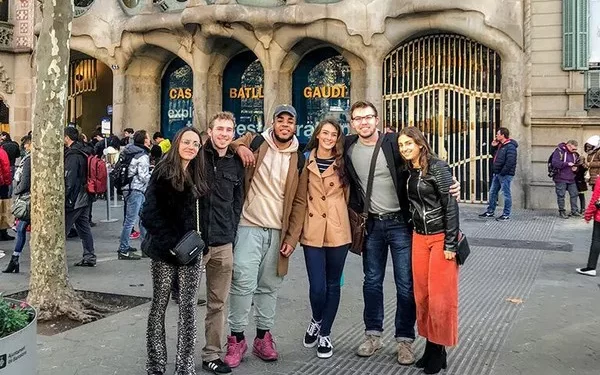Studying abroad is a dream cherished by countless individuals seeking to broaden their horizons, immerse themselves in new cultures, and pursue academic excellence. Among the myriad destinations available to international students, the United States stands out as a beacon of opportunity, renowned for its world-class educational institutions and diverse learning experiences. However, before embarking on this transformative journey, it’s essential to understand the criteria for obtaining a study visa for the USA. In this article, we’ll explore the key requirements and procedures involved in securing a student visa, empowering aspiring scholars to navigate the process with confidence and clarity.
1. Choose an Accredited Institution
The first step in obtaining a study visa for the USA is to gain acceptance into an accredited educational institution. Whether you’re pursuing undergraduate, graduate, or specialized studies, it’s crucial to research and select a recognized school or university that aligns with your academic and career goals. Accreditation ensures that the institution meets established standards of quality and integrity, enhancing the credibility of your educational credentials and visa application.
Research Programs: Explore the diverse range of academic programs and courses offered by accredited institutions across the USA. Consider factors such as program curriculum, faculty expertise, research opportunities, and campus culture to find the best fit for your educational aspirations.
Verify Accreditation: Confirm that your chosen institution is accredited by a recognized accrediting agency approved by the U.S. Department of Education or the Council for Higher Education Accreditation (CHEA). Accreditation status can typically be verified through the institution’s official website or databases maintained by accrediting bodies.
2. Obtain Form I-20 or DS-2019
Once you’ve been accepted into an accredited institution, the next step is to obtain the necessary immigration documents, namely Form I-20 (for F visa) or DS-2019 (for J visa). These documents, issued by the designated school official (DSO) or program sponsor, certify your eligibility for student status and outline the details of your intended program of study in the USA.
Submit Required Documentation: Work closely with your institution’s admissions office or international student services department to submit the required documentation for Form I-20 or DS-2019 issuance. This may include proof of financial support, academic transcripts, passport information, and any additional forms or certifications as required.
Pay SEVIS Fee: Before your Form I-20 or DS-2019 can be processed, you’ll need to pay the Student and Exchange Visitor Information System (SEVIS) fee, which helps fund the administration and oversight of the student visa program. The SEVIS fee payment receipt is a mandatory component of your visa application.
3. Complete the Visa Application Process
With Form I-20 or DS-2019 in hand, you’re ready to initiate the visa application process. This typically involves completing the online visa application form (DS-160), scheduling a visa interview at the nearest U.S. embassy or consulate, and preparing the required documentation to support your application.
Schedule Visa Interview: Visit the website of the U.S. Department of State to schedule a visa interview appointment at the embassy or consulate responsible for processing student visas in your home country. It’s advisable to schedule your interview well in advance to secure your preferred date and time.
Prepare Supporting Documents: Gather the necessary documentation to support your visa application, including your passport, Form I-20 or DS-2019, SEVIS fee payment receipt, visa application fee payment receipt, academic transcripts, standardized test scores (if required), and any additional supporting materials requested by the consular officer.
4. Attend Visa Interview
The visa interview represents a critical stage in the application process, providing an opportunity for consular officers to assess your eligibility for a student visa based on your academic intentions, financial resources, and ties to your home country. Approach the interview with confidence and preparedness, ensuring that you provide honest and accurate responses to the officer’s questions.
Demonstrate Intentions: Clearly articulate your intentions to pursue a course of study in the USA and return to your home country upon completion of your program. Consular officers seek assurance that you are a genuine student with a legitimate purpose for seeking entry into the USA.
Address Financial Resources: Be prepared to provide evidence of sufficient financial resources to cover your tuition fees, living expenses, and other educational costs for the duration of your stay in the USA. This may include bank statements, scholarship award letters, financial aid documents, or sponsorship letters from parents or guardians.
5. Await Visa Decision and Prepare for Arrival
Following the visa interview, you’ll be notified of the consular officer’s decision regarding your visa application. If approved, you’ll receive your passport with the student visa affixed, allowing you to travel to the USA and commence your academic pursuits. Upon arrival, familiarize yourself with the requirements and regulations governing student visa holders, including reporting obligations, employment restrictions, and maintenance of legal status.
Conclusion:
In conclusion, obtaining a study visa for the USA is a multifaceted process that requires careful planning, diligence, and adherence to established requirements. By selecting an accredited institution, obtaining the necessary immigration documents, completing the visa application process, and preparing for the visa interview, aspiring scholars can pave the way for a transformative educational experience in the USA. So seize the opportunity, pursue your academic ambitions, and embark on a journey of discovery and growth in one of the world’s most esteemed educational destinations.
Related information:


















